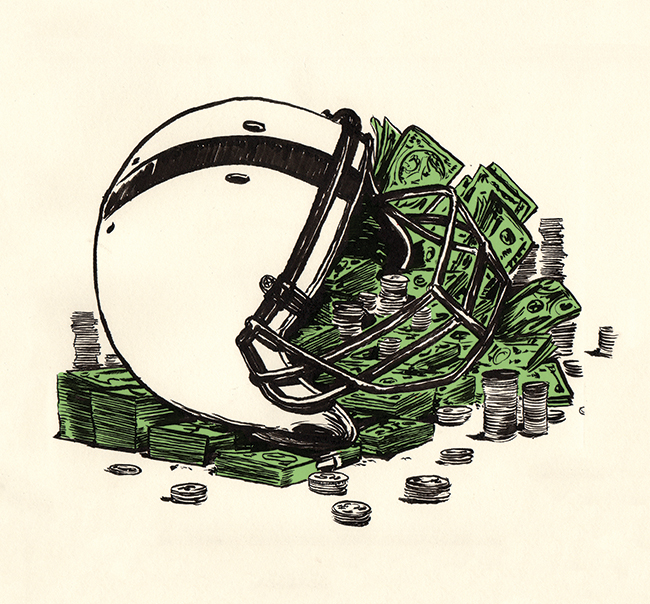ZEITGUIDE TO MARCH MADNESS

The NCAA Men’s Basketball Championship between Wisconsin and Duke last year attracted just over 28 million viewers, paltry compared with the 114 million people who watched Super Bowl 49.
But the whole tournament averaged 11.3 million viewers per game and there were 67 games. That’s a cumulative audience of more than 750 million. No wonder ad revenues have topped the $1.1 billion mark the last few years, making the shared $750 million that CBS and Turner pay the NCAA for broadcasting rights one of the biggest bargains in sports.
Some other measures of the popularity of the tournament:
- There were an additional 80.7 million live video streams over the course of the tournament last year. More people streamed the Wisconsin-Duke game than the Super Bowl.
- Some 60 million Americans will fill out a bracket this year, with an estimated $9.2 billion in total being wagered on the games.
So how do colleges and universities make out for creating this spectacle? Most of the TV revenue is earmarked for things such as academic programs and financial assistance for student athletes. Schools that have never even made it to March Madness get some of that money. Then, 25%-30% (roughly $200 million this year) is divvied up by the NCAA’s complicated unit system which rewards not individual teams, but conferences such as the Big 10 or Big Sky based on total game appearances in the tournament over the last six years. Conferences usually then split the money evenly between all member schools.So while Michigan State’s performance contributed $5.1 million to the Big Ten in 2015, their payout will be equal to fellow conference member Northwestern, which hasn’t ever qualified for the tournament.
Being in the sports spotlight benefits individual schools more directly, too. For instance, big wins can lead to a spike in applications. This so-called “Flutie Effect” is named for Boston College quarterback Doug Flutie, whose famous game-winning Hail Mary pass in 1984 led to a 30% spike in applications to BC. More recently, applications to little-known Florida Gulf Coast University shot up 35.4% following an unexpected run to the Sweet Sixteen in 2013 behind the team affectionately nicknamed “Dunk City.” More applications means increased selectivity, adding to the prestige and quality of a university.
And there are other benefits to all that time on TV. Butler University, an Indianapolis based school with an enrollment under 5,000, gained media exposure worth an estimated $450 million during its surprise run to the Final Four in 2011. Virginia Commonwealth University sold more than $1.3 million in merchandise at its campus bookstore during its Final Four run that same year.
Still, though a winning sports program would seem to be a cash cow, the fact is athletic departments spend millions on big name coaches and elite facilities. The result? Many of the largest and top-earning athletic departments still lose money.
All this money flying around makes it difficult to avoid the elephant in the room for the NCAA: whether the athletes themselves should be further compensated. We delved into this question last year in our ZEITGUIDE to Paying College Athletes. Since then, an effort by football players at Northwestern to unionize was more or less tabled when the National Labor Relations Board declined to rule whether players should be considered university employees.
In another prominent case, a district court ruling that universities could make deferred payments to players for the use of their likeness, such as in a videogame, was overturned. That case may now be headed to the Supreme Court to decide once and for all whether college players can be paid for the use of their names, images and likenesses.
